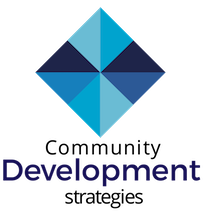With the Opportunity Zones program, Congress placed a powerful neighborhood transformation tool in the hands of state and local leaders as part of the 2017 Tax Cuts and Jobs Act. The primary goal of Opportunity Zones is to encourage long-term equity investments in struggling communities, many of which have been excluded from national economic expansion benefits in recent years. This tool must be thoughtfully deployed to reinvigorate struggling communities and foster economic development.
This article, Local leadership is key for successful Opportunity Zones, by The Hill provides strategies (summarized below from the article) so communities can position themselves to fully and efficiently tap into this critical resource.
Opportunities
- Investors are exclusively using their own capital without any up-front subsidy, so there is no cap on how much capital can be put to work rebuilding communities.
- The recent stock market boom and prolonged period of record corporate profitability have resulted in a massive stockpile of unrealized capital gains wealth, over $6 trillion in corporate and individual holdings as of the end of 2017, according to our analysis of Federal Reserve data.
- Opportunity Funds are the essential intermediary in connecting the capital and the communities, private investment is a key ingredient of any healthy economy, however, capital incentives alone can only achieve limited results.
Action Plan for Governors/Mayors
- Develop a strategy to ensure strong coordination between the public, private, and philanthropic sectors. Some areas and sectors are naturally better positioned to attract and absorb investment.
- Collaborate and coalesce the philanthropic sector. Institutions, community organizations, foundations, large local employers and small businesses must be recruited in a coordinated effort to build capacity. Most equity investors are disconnected from low-income communities, local leaders must be especially proactive in ensuring investors are aware of opportunities, local assets and partners.
- Designate an Opportunity Zone senior official point person in local jurisdictions and the state to ensure accountability and coordination of resources.
- Ensure state tax codes conform with Opportunity Zone incentives so local investors and communities are not disadvantaged (New York is an example where this has been done).
- Align workforce development programs to help local residents take advantage of new employment opportunities, ease restrictive land use regulations that prevent inclusive growth and reduce onerous occupational licensing burdens.
- Establish public sector entity funds dedicated to serve specific localities or to pursue certain policy objectives. Public-private models will become key to the broader system in local markets.
Overall Themes
Be strategic: Private investment is a critical ingredient in the success of any local economy, but capital alone is not a strategy. Communities need to determine: 1) What other policies are needed to help communities thrive? 2) Are local zoning, permitting/licensing creating barriers to growth and mobility? 3) Are workforce development programs aligned to support the new companies and projects taking root in the zones?
Focus on entrepreneurship: The best way to build a stable economy with broad access to opportunity is to foster a thriving entrepreneurial environment. New businesses set off a chain reaction in the economy that boosts competition, innovation, and productivity.
Convene and collaborate: Investors will be attracted to places with robust local support networks. Local and state leaders must be in a position to reach across sectors and various political ideologies to ensure local stakeholders are working together towards a common goal.
Enable an open data platform: Local jurisdictions and state agencies need to be open to making their Opportunity Zone data available to investors and researchers. Having an online portal with information on local needs, qualified investments, and complementary state and local incentives is critical to both short and long-term program success. Tracking the inflows of investments and their local impact will help researchers gain valuable insights into which local models work the best to develop best practices/lessons learned.
